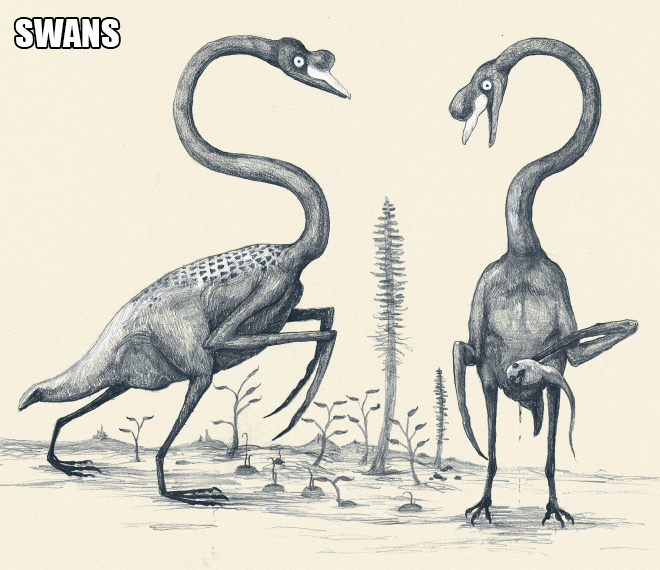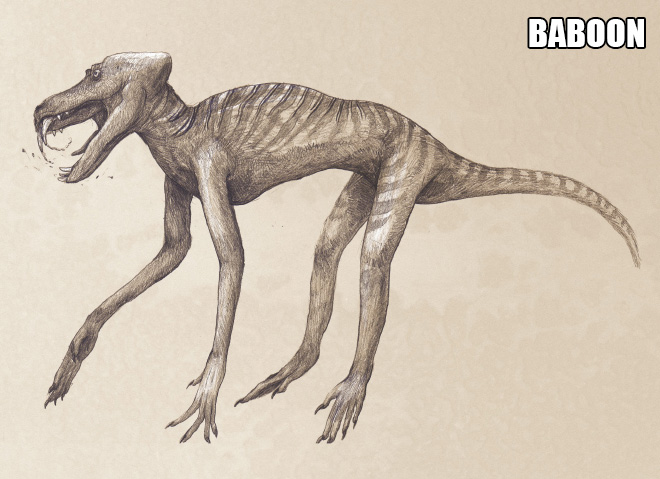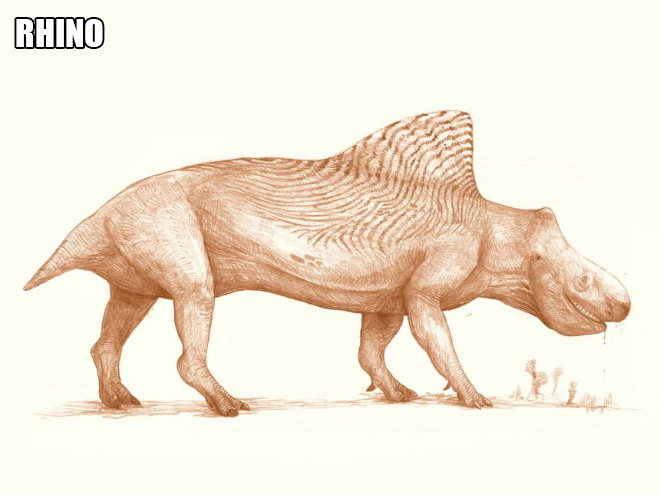If We Drew Modern Animals Solely Based On Their Bones, Like Dinosaurs
C. M. Kosemen’s artwork is pretty cool and unique! He’s a Turkish artist who’s known for his depictions of prehistoric creatures, fantastical creatures, and cryptids.
One thing that’s impressive about Kosemen’s art is that he doesn’t just draw the animals as they’re traditionally portrayed. Instead, he tries to imagine what they might look like based on scientific evidence and speculation. For example, he might draw a dinosaur with feathers or a sea serpent with a different body shape than what’s commonly seen in old drawings.

A particular aspect of Kosemen’s artwork is linked to the way the media has imagined and portrayed dinosaurs in present-day culture. In his opinion, we should be taking a much closer look at present-day animals to get the proper image of how dinosaurs used to look. Because in truth many of the animals roaming the land in the present have chubby bodies, extra bits of skin, and tissues or bladders that would never show up in million-year-old fossils. Take for instance what a scientifically correct skeleton of a hippo could look like if we removed all the fat around his face and used our own imagination to fill in the blanks and picture the creature that has such a skeleton.

Another thing to note is what Kosemen refers to as the “roadkill hair”. In some cases, around very old fossils, traces of hair were found. Scientists took this info and imagined creatures that had tufts of hair, placed only in the specific areas of the body where those hair traces were found. But who is to say that the whole animal wasn’t actually all covered in hair that was gone with the erosion of time, wind, or the elements after the animal died?

The main idea is that with the very minute amount of info that a fossil skeleton can provide, the prehistoric animals we imagined might not even look the way we think they did. And he exemplified this by drawing present-day versions of animals based strictly on their skeletons.



C. M. Kosemen’s artwork is imaginative and thought-provoking. It’s fascinating to see his interpretations of creatures that we might not ever get to see in real life, and it’s clear that he puts a lot of research and care into each piece he creates.
You’ve reached the end of the story! Share it with your friends if you liked it!
Check out more, below:
